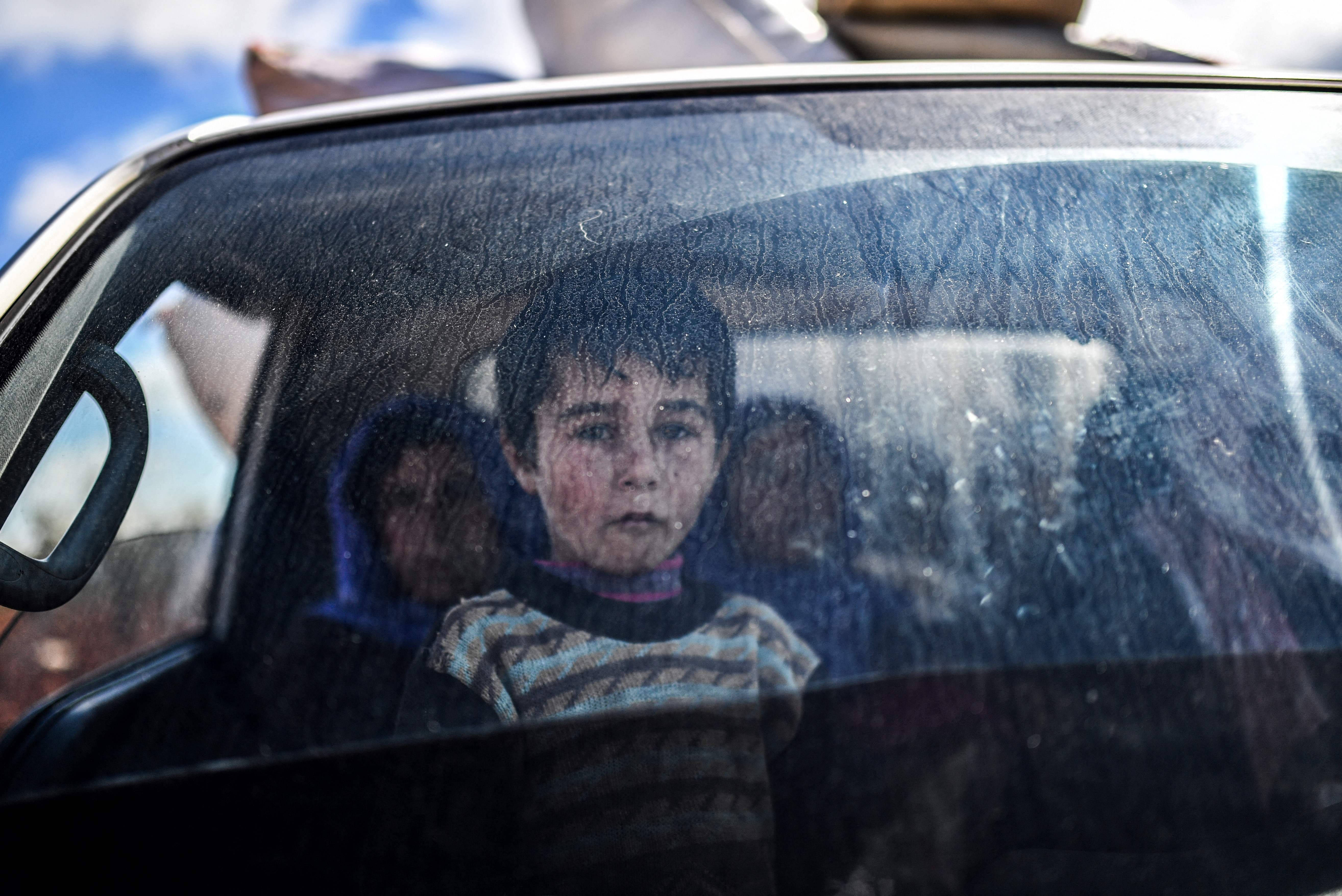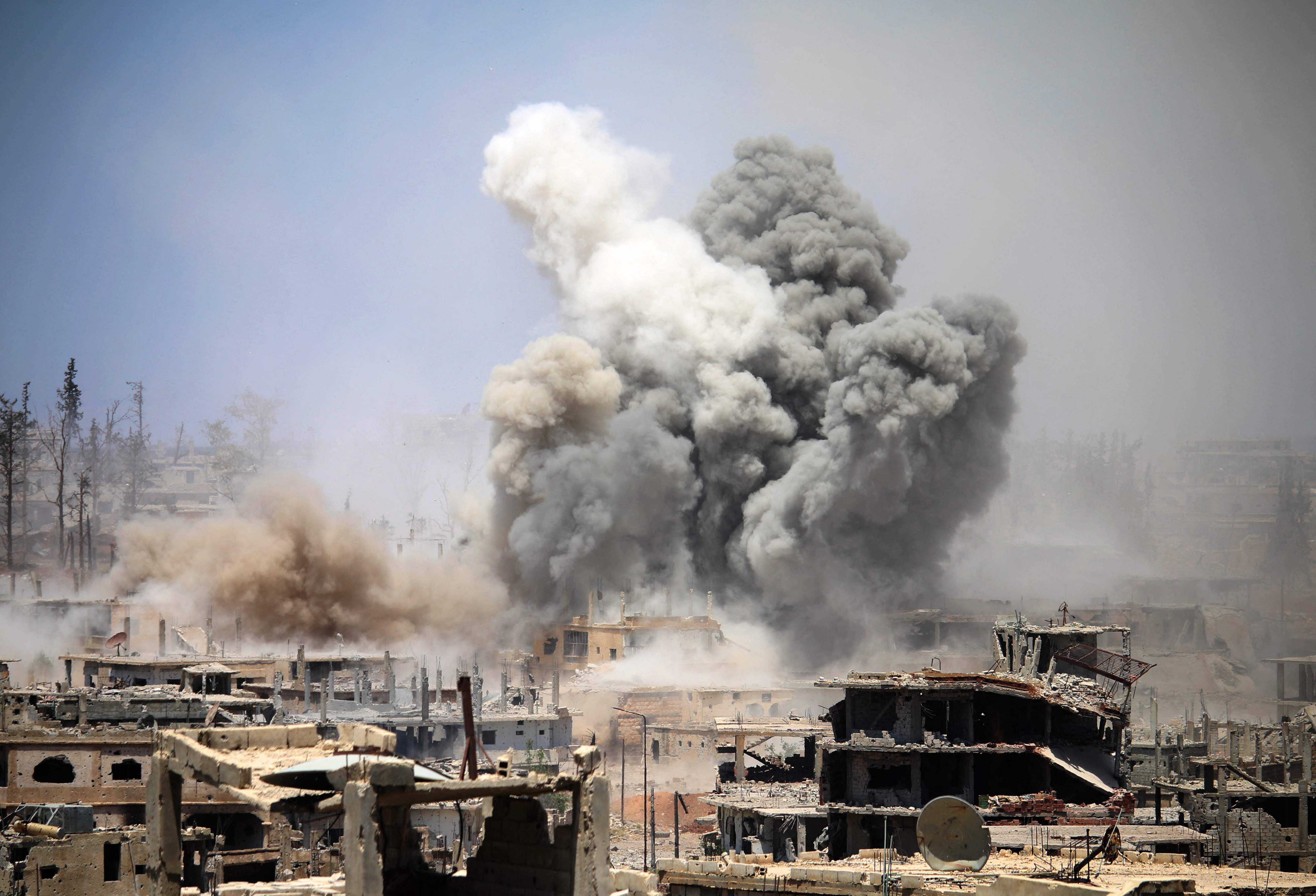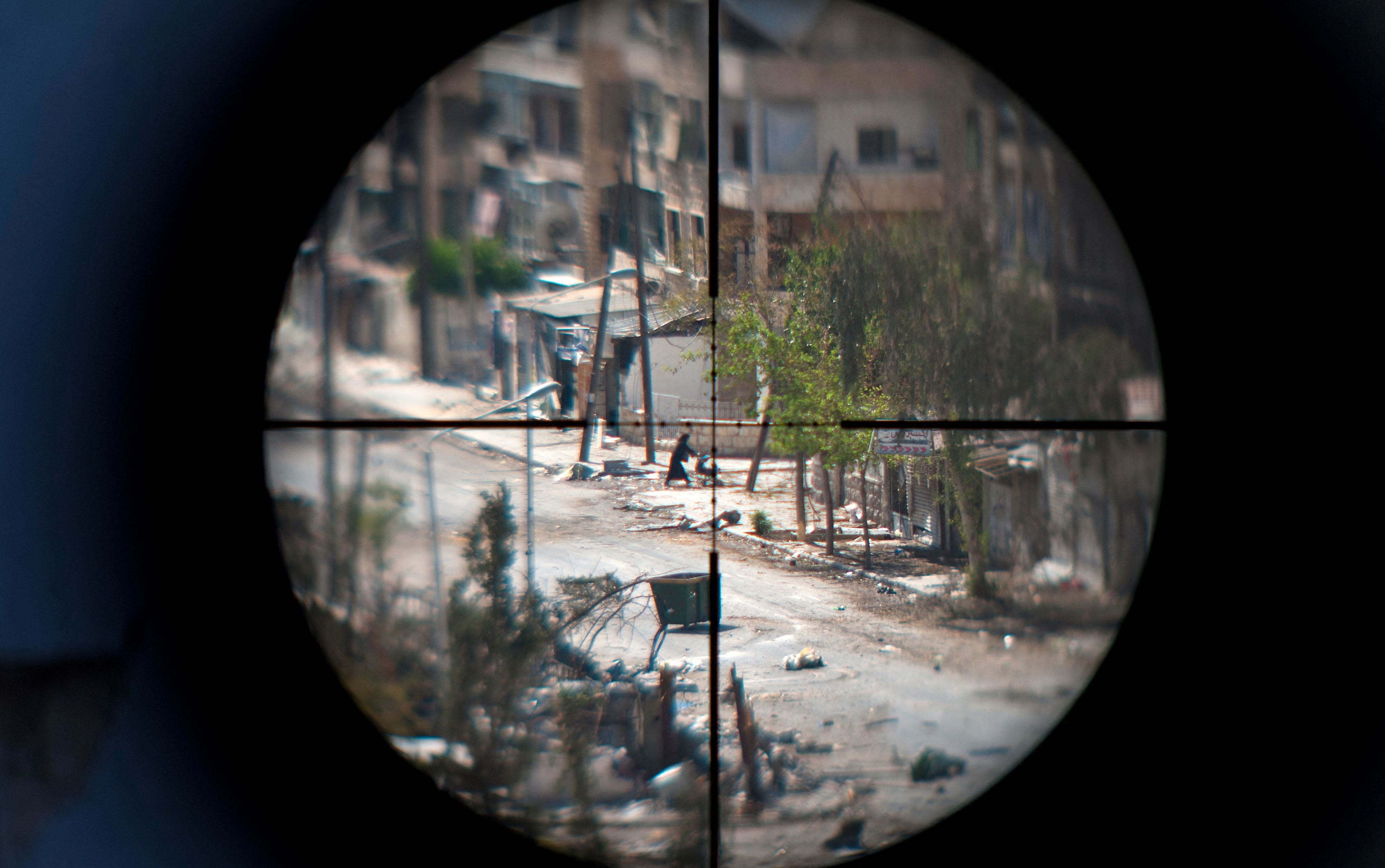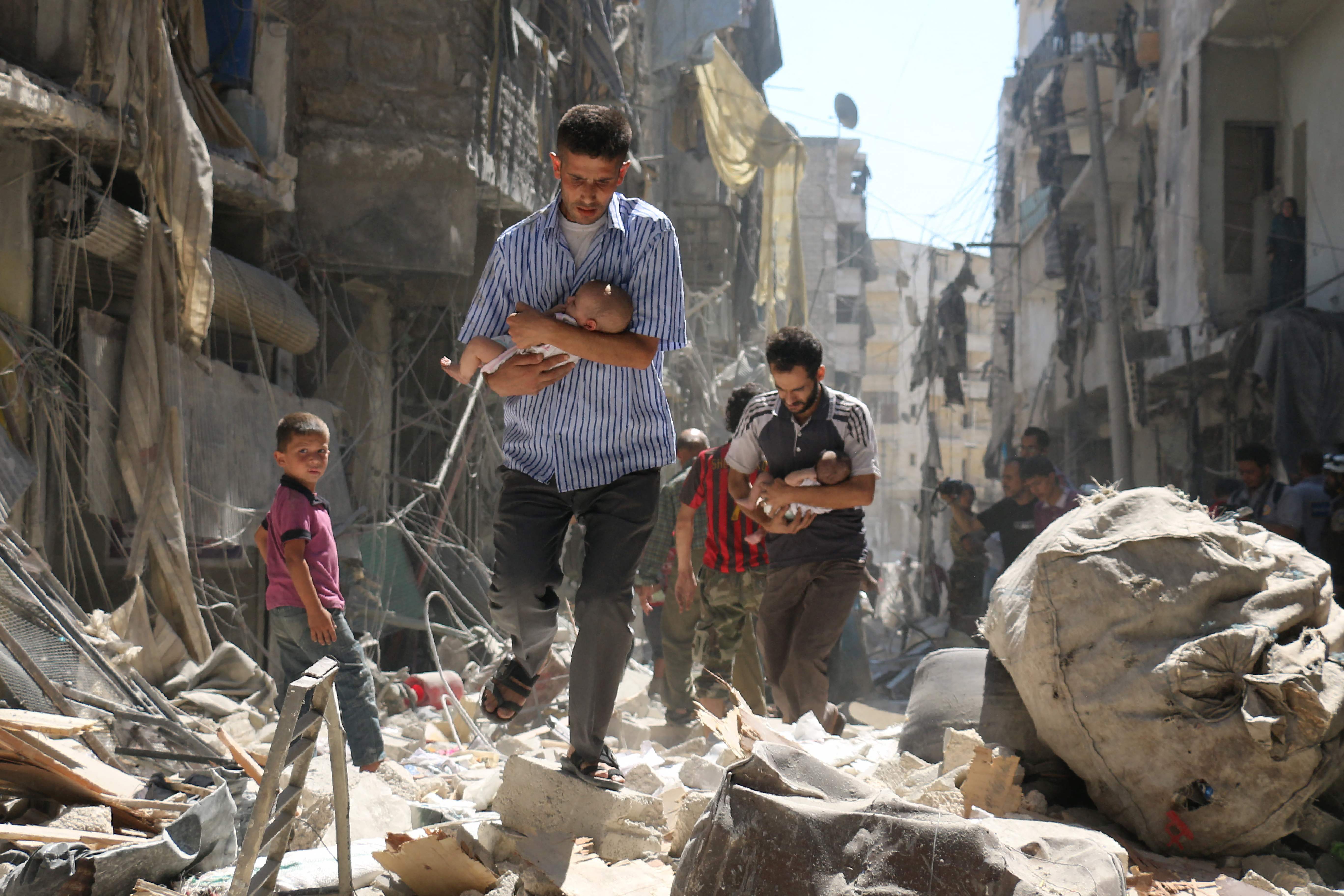They joined Syria’s revolution hoping for a better future. Ten years on it has driven them far from home
Tahani and Ahmed joined the uprising against Assad. Ten years on their lives, like millions of other Syrians, have been changed for ever, reports Bel Trew


Please don’t go, darling, come straight home, was the panicked plea from Tahani’s mother when she found out about the Facebook invite to a rare protest in central Damascus.
Determined, the fourth-year psychology student, went anyway scrambling to get to the rallying point after her last lecture.
It was early March, 2011, the early days of Syria’s Arab Spring uprising.
Forty kilometres north in the mountain town of Madaya, 16-year-old Ahmed wept when news reached him of the protests in the centre of the capital.
The teenager had been forced to leave school the year before to work at his grandfather’s shop, where he dreamt of starting a construction business that he knew would likely never get off the ground.
Despite coming from adjacent towns Ahmed, now 26, and Tahani, now 32, have never met and do not know each other.
They are unconnected citizens of Syria who in their own ways were swept up by the tidal wave of uprisings that crashed across the region that year, hitting Syria’s shores exactly a decade ago.
While their stories vastly differ together they tell a poignant story of the country’s heartbreaking collapse from hopeful revolution into the bloodiest civil war of the 21st century. Over the past 10 years that war has become an increasingly complex proxy conflict between some of the world’s superpowers.
By the time Tahani arrived at the starting point of the protests, members of the feared security forces had cleared the crowds, and were hunting for stray demonstrators through the side streets of Damascus. Their trucks, ladened with detainees, lined the roads.
But this heavy-handed crackdown didn’t deter Ahmed.
“We were all stuck. Even President Assad’s supporters felt the injustices Syrians suffered, but they were terrified of the regime,” he tells The Independent from the northwestern province of Idlib, where he now lives.
“It was dangerous to join the movement but we knew this was our one chance for change.”
Ten years on, Tahani is a refugee living in Germany. Like so many she was arrested for her activism, tortured in detention before she managed to escape Syria, starting the long and harrowing journey by foot across Europe. Her mother, who had initially begged her children not to join the protests, disappeared into detention herself in 2014 and is still missing.
Aged just 16, Ahmed joined the armed uprising against President Bashar al-Assad. But after 10 years of losing an unwinnable war and with no qualifications bar battle experience, one of the few sources of income left to support his family was joining Turkish-backed Syrian forces fighting Ankara’s battles abroad. Despite being critical of the Turkish intervention in the region, he spent most of 2020 as a mercenary fighting, apparently on Ankara’s payroll, in Libya.
From the very start of Syria’s ill-fated revolution, regime forces used extreme violence against protesters. Assad later turned the full fury of his army and airforce on those that then took up arms.
Airstrikes, barrel bombs and chemical weapons have rained down on cities and towns across the country. The conflict escalated when Russia entered the foray in support of Assad in 2015, and a year later, when Turkey also intervened with its own interests on the opposing side.

And so the population of the country have been swallowed up in the crossfire of battlegrounds which are populated by a tangled mess of Syrian and foreign soldiers, jihadi groups and militias.
No one knows how many people have died. The UN stopped counting in 2014 when the death toll stood at 400,000.
To give some sense of scale, according to the International Committee of the Red Cross almost half of all young people (What does “young” mean? Under a certain age?) in Syria say a close relative or friend has been killing the conflict.
But death is not the only indicator of tragedy in war-ravaged Syria.
The UN’s child agency says it can confirm that nearly 6,000 children (some as young as seven years old) have been recruited into the fighting like Ahmed initially was.
Tahani, meanwhile, is one of nearly six million Syrians that have fled their homeland. (Seven million remain displaced within the country).
“I don’t know where to start or how to finish,” says Tahani, struggling to find words to tell her story of Syria’s uprising.
“What can you call it except the systematic murder of dreamers who demanded freedom?”
‘She just vanished’
For three years Tahani moved secretly from house to house, avoiding sleeping at home, fearing arrest or worse.
Just days after missing that initial rally in Damascus she started organising protests in her home town of Zabadani, which is not far from Madaya and also in the mountains near the border with Lebanon.
Videos that she filmed during the protests and put up on YouTube went viral. She began coordinating a network of civilian journalists.
And because of this, she became a target.
Zabadani had become an opposition stronghold and was stormed by the regime in February 2012. Tahani fled with her family in the middle of the night on foot to a nearby town that was still safe.
The regime eventually caught up with the family in July 2014 at a military checkpoint as they tried to flee to another city. Tahani was arrested and for months was shuttled between three security branches before being held in a central prison.
In jail, Tahani was among 15 women crushed into a single filthy, tiny cell, where she says they were starved and deprived of water. The echos of torture from the neighbouring cells drowned out every thought. No one was permitted to speak, they communicated in the pitch black in whispers. She says she was once beaten so hard the wounds stayed on her body for several months.
In November her mother was able to visit her to bring supplies but was arrested immediately after that.
No one has heard from her since. The family have no idea where or why she is being held or whether she is alive. Despite desperate attempts to find any information about what happened there has been no word in seven years.
“She just vanished,” Tahani says.
The siege
They knew it was a gamble, but Ahmed and his cousins were ecstatic when signing up to the newly formed Free Syrian Army, as it emerged in the summer of 2011 from a group of army deserters.
The population of Madaya had a lot to lose.
Pre-war the area had witnessed an urban boom because of tourism, becoming a popular weekend retreat for the wealthy elite of Damascus.
In fact the “grapevine” of Madaya, was a nickname given to a neighbourhood just outside town that was sprinkled with sprawling luxury villas belonging to the richest echelons of Syrian society. The town’s central market became famous for having foreign brands that you couldn’t find anywhere else in Syria, that came in via the busy smuggling routes.
But the people of Madaya wanted more than just servicing the holidaying elite, says Ahmed. They wanted political freedom.
“The regime forced us to take arms against him [Assad], it was the only way for us as the opposition to survive,” he says of his decision to join the brigades.

Six of his cousins who signed up like him were killed, as the fighting raged across multiple towns. And worse than the battles was hunger.
Early on the regime had withdrawn its security forces from the area, making Madaya a safe haven for activists and FSA fighters.
In June 2015 government forces circled the town of 40,000 people and started a crippling siege.
In a story which would be repeated across several towns in Syria, including Tahani’s, store shelves quickly emptied and drove food prices so high that, at one point, a kilo of rice or sugar cost $400.
Parents began boiling tree leaves in water with spices to feed their children. Families ate stray dogs, cats and hedgehogs. Many tried to commit suicide.
The turning point was opposition forces launching their own deadly siege on two pro-government towns elsewhere in Syria, forcing the government and its affiliates to the negotiating table. The first UN convoy of aid in six months was finally allowed through in 2016.
And in 2017 the warring sides reached the so-called “four towns agreement” which allowed residents of the besieged rebel-held towns of Madaya and Zabadani to be bussed out to Idlib in exchange for the release of the population of Foah and Kefraya, two besieged government-held towns.
Ahmed was on one of those buses to Idlib, which had become the final opposition pocket in Syria, housing a mix of displaced civilians, rebels and militants. At that point he realised fighting against the government was pointless.
“It is very hard for the opposition now to defeat Assad, especially with Iran and Russia supporting him.
“And by that point, I’d lost most of my friends.”
The odyssey across Europe
There was no one from Tahani’s family left in Syria to greet her by the time she was finally released from jail in the autumn of 2014.
Her mother, uncle and cousins had been arrested and were missing. Her father had died from cancer refusing to leave his farm, which was so heavily bombarded by Assad’s artillery fire not a single tree was left standing. The rest of her family bar one sister had fled, most of her neighbours were dead.
And so with little left for her in Syria, in September 2015 she escaped to Lebanon hidden in a fuel truck, before flying to Turkey hoping to find refuge in Europe.
There, like a million other Syrians, she paid $1,000 to board a tiny rubber dinghy to Greece. The smugglers she described as a mafia crammed 50 people onboard a vessel only designed to carry 20, and then abandoned them at sea.

“The journey lasted about four hours and we nearly died so many times,” she says.
“The sea was raging. No one knew how to drive it or the directions. Our safe arrival was a miracle.”
Completely alone, she tried to navigate the route from Greece across the Balkans, hearing that Germany was friendly to refugees. She gathered tips from people who had gone before her and tried to work out routes using Google Maps.
By chance, she stumbled upon distant relatives making the same pilgrimage across the continent. At one point she pretended a few Syrian teenagers she encountered were her sons to prevent them from being detained.
They would be intermittently helped by the authorities or chased away.
They slept for days in the open, particularly at the border of countries while they waited for permission to cross. She can barely remember the countries she crossed.
“I had to stay as awake as possible and not trust anyone so I could survive,” she says of the harrowing journey.
“The worst part was the police dogs, who would terrify the children.”
Someone else’s war
Ahmed only agreed to the mercenary gig in Libya because it was well paid and he thought he could board a migrant boat to Europe.
In 2019, after two years living in Idlib in abject poverty, he joined the Turkey-backed Syrian National Army as Ankara launched its controversial incursion against the Kurds in northern Syria.
A few months later Turkey formally intervened in Libya on behalf of Libya’s recognised government, against renegade eastern commander General Khalifa Haftar who was attempting to take Tripoli.
Ahmed said Libya’s Government of National Accord, with Turkey’s support, promised Syrians $2,000 a month: a considerable pay rise from his monthly salary of 500 Turkish lira ($70) fighting Turkey’s offensives in northern Syria.
But for Ahmed the real benefit of the mercenary job in Libya, was its geographical proximity to Europe.
“I heard lots of Syrians were able to reach Italy from Libya shores by boat,’’ he tells The Independent.
“We didn’t care about the war in Libya. Most of the Syrians who went didn’t even know who they were fighting. They went there only for money because people were starving in Syria.”
It was miserable.
The unruly behaviour of the Syrians – including looting, and stealing weapons – angered several Libyan brigades, worried about the optics of foreigners fighting their battles, he said.
The Syrian regime, meanwhile began recruiting Syrians from its own ranks to operate as mercenaries for Haftar’s forces on the other side of the conflict, meaning Syrians were once again fighting Syrians – but this time over someone else’s battle-ravaged lands.
“The situation was very hard in the first days. Haftar’s forces were advancing to Tripoli, and I was always afraid of being captured.”
To make matters worse he realised it wasn’t even possible to get to Europe.
He said newer mercenary opportunities have since opened up, such as going to Azerbaijan in the autumn to fight in Nagorno Karabakh (which Turkey denies). But he refused.

“My friend went and was injured after 15 days of being there,” he says, adding that others were killed within hours of landing.
At the same time, he became increasingly disenchanted with Turkey’s role in Syria.
“They are there to save the Syrian regime,” he tells The Independent bitterly.
“All Turkey’s actions substantiate this view, from its support of the Islamic State and Hayat Tahrir al-Sham [a militant group with links to al-Qaida] to opening its borders to the terrorists to enter Syria.”
The future
Tahani’s epic journey finally came to an end on 3 November 2015, when she made it to Germany and applied for asylum.
She picked up German fast and, now a mother-of-two, became a translator: but she is still haunted by her missing loved ones, particularly her mother whose fate she likely will never know.
“Although I am not optimistic, if I were to live it all again I would do the same, I have no regrets fighting for their dignity.”
Ahmed, who never finished school and who has been a fighter for almost half his life, is still trying to work out how to get to Europe. For now, he remains stuck in Idlib, which is expected to be the final and bloodiest battle of the war.
There is nothing left in Syria for him but he says he has no regrets.
“The Syrian revolution may have ended on the ground, but it is still alive in our hearts.
Join our commenting forum
Join thought-provoking conversations, follow other Independent readers and see their replies
Comments
Bookmark popover
Removed from bookmarks